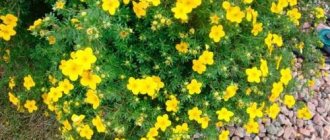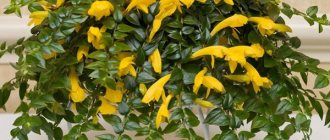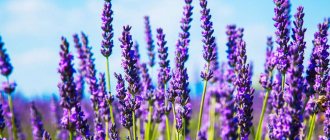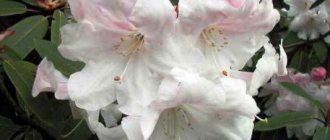Mimosa or Mimosa belongs to a genus of flowering plants from the legume family or Fabaceae. Until recently, Mimosa belonged to the disbanded family Mimosa or Mimosaceae. Mimosas can be represented by herbs, shrubs or medium-sized trees with bipinnate leaves.
Most often, the flower consists of four parts, but there are species with three or six parts. The inflorescences are represented by dense heads or racemes. The predominant place of growth is South America. More than 600 species are known and studied.
Main types
Shy or Mimosa pudica L
Prefers damp places and thickets. The main habitats are the lowlands of the Antilles and the territory of Brazil. The appearance corresponds to evergreen plants, subshrubs or shrubs with straight shoots up to one meter high. Characterized by the presence of spines and pubescence.
Small flowers are collected in heads at the top of the shoots. The predominant color is pink-violet. Flowering - in summer. Grown as an annual ornamental plant.
Rough or Mimosa scabrella
The birthplace of this twenty-meter plant is South America. The panicles of numerous flowers are painted white.
Photo gallery
Lazy or Mimosa pigra
An amazing perennial ornamental plant. Straight and branched shoots reach a height of 0.5 meters. White flowers are characterized by spherical heads. Fern-like leaves are highly sensitive.
Notes
- For the convention of indicating the class of dicotyledons as a superior taxon for the group of plants described in this article, see the section “APG Systems” of the article “Dicotyledons”.
- ↑ 1 2
[botany.si.edu/ing/INGsearch.cfm?searchword=Mimosa Information on the genus
Mimosa
Index Nominum Genericorum
database of the International Association for Plant Taxonomy (IAPT). (English) - The Plant List: [www.theplantlist.org/browse/A/Leguminosae/Mimosa/ Mimosa
]
Mimosa propagation
- Seeds are often used for propagation, but mimosa cuttings can also be rooted. At the beginning of March, the seeds should be scarified, which is carried out according to certain rules, or doused with boiling water.
- Sowing of treated seeds is carried out in a substrate, which consists of two parts peat and part river sand.
- The planting depth of mimosa should not exceed 5 mm. Seeds germinate at a temperature of +25°C.
- Picking is done after two or three true leaves appear.
- The soil needs regular moistening.
A little botany
But let’s return to our “mimosa” or, more correctly, silver acacia. As already mentioned, flowering in the Mediterranean occurs in winter, with very numerous and fragrant yellow fluffy balls with a diameter of about 5 mm, collected in long racemes. The flowers are noticeable mainly due to their numerous bright yellow stamens, which protrude far from the corolla. The fruits in the northern hemisphere ripen closer to autumn and are slightly curved flattened beans 7-9 cm long. The seeds are dark brown or black, hard, flat, 3-4 mm in size. Flowering, depending on the zone and growing conditions, lasts 1.5-2 months and is accompanied by a very pleasant and unique aroma.
Landing Features
In our climate zone, mimosa is grown in greenhouses and winter gardens. The plant is very heat-loving and light-loving. It is able to form a compact bush and bloom profusely only in the presence of bright sunlight.
The ideal landing location is the south side. To protect against sunburn, the tender leaves of mimosa are shaded, and after cloudy days they are gradually accustomed to bright light. Mimosa is characterized by relatively slow development and weak height gain.
The optimal soil for planting is a mixture of topsoil, peat, prepared humus and sand. All ingredients are taken in equal quantities. The bottom of the container must be equipped with drainage, which can be expanded clay.
A useful plant?
The mimosa tree, sometimes called the Persian silk tree, is a legume and can help enrich the soil where it grows. The Persian name means "night sleeper" and in Japan it is known as the sleeping tree. This is because the leaves fold at night and during rainstorms. Instead of undivided leaves, they are separated, like a fern. The flowers, pale to dark pink, appear like fine threads of silk. They form small pods several centimeters long and contain seeds.
The technical name, Albizia julibrissin, is native to East and Southwest Asia, but is also found in the United States. It is a fast-growing ornamental tree that can reach over 9 meters in height. Among the advantages it is worth mentioning that they are quite resistant to cold weather. The crowns create good shade and smell delicious.
While these trees are beautiful and powerful, their impact on the natural environment can be problematic outside of their natural ecosystem. However, the severity of their effects remains controversial. The environmental threat is that the mimosa tree (photo can be seen later in the article) is a strong competitor to native trees and shrubs in open areas or forest edges. The dense walls of the mimosa significantly reduce the amount of sunlight and nutrients, making them unavailable to other plants.
Care Tips
- Mimosa prefers regular watering with soft and settled water. The signal for the next watering is the relative drying of the top layer of soil. The plant requires the most abundant moisture from spring to early autumn. Then watering is reduced, and by winter they move to a level of very moderate moisture.
- Mimosa is very sensitive to dry indoor air and responds positively to spraying with soft water.
- Feeding is carried out in spring and summer regularly twice a month. Fertilizers are not used in winter.
Japanese acacia. Sophora japonica - nectar pure honey!
One of the best honey plants, the fragrant, decorative and exotic Japanese Sophora is surprisingly resilient and unpretentious. In addition, Sophora is a good medicinal vitamin plant.
Maja Dumat / Flickr.com
Description . Sophora japonica, or “Japanese acacia” (Styphnolobium japonicum) is a deciduous forest-forming tree with a wide crown, 25 m high, there are varietal forms with a weeping crown. Leaves are imparipinnate up to 30 cm long. The flowers are white or yellowish, similar to the flowers of white robinia, just as fragrant, but not collected in clusters, but rather large, loose panicles up to 50 cm long. It blooms for 1.5 months in July - August, immediately after the linden tree, which is extremely important for beekeeping. Honey productivity is more than 250 kg/ha. Moreover, Sophora produces nectar with the highest sugar content - up to 80%! This is exactly how many sugars (fructose, glucose, maltose, sucrose) are contained in mature honey. That is, Sophora immediately produces ready-made honey, and the bees do not have to spend a lot of time evaporating water from the nectar; they can spend it on additional bribes. That is why bees buzz on Sophora from morning to evening. But Japanese Sophora blooms only once every 2 years, so it is necessary to plant seedlings from different crops so that some trees bloom one year and others another. Another disadvantage of Sophora japonica is that the tree blooms late, usually at the age of 25 years. Otherwise, it is a very promising and also medicinal plant. Its buds and unripe fruits are collected for the treatment of the cardiovascular system and vitamin deficiencies; sophora is used externally as a wound healing agent for burns (relieving pain), ulcers and other skin lesions. Provitamin P contained in the raw material strengthens the walls of blood vessels and serves as a prevention of varicose veins, heart attack, stroke, and capillary fragility.
Sergey Gorely / Personal archive
The fruits are bead-like pods, up to 8 cm, red-brown when ripe, often hang until spring, giving the tree some decorativeness. Unlike other “acacias,” sophora does not have thorns and, moreover, does not form shoots like “white acacia,” which makes it even more attractive.
Growing conditions. Sophora japonica, although originally from the subtropics of East Asia, is surprisingly hardy and flexible - it tolerates drought, is shade-tolerant, but light-loving, grows even on saline soils, can withstand frosts down to -30°C without damage, but can survive -37°C with some frostbite . Therefore, in the south of the Middle Zone, Sophora can be grown without shelter, only young seedlings up to 2 m in height are insulated. In Kyiv there are trees that are more than 100 years old. In the central zone, sophora has no pests and does not get sick. It grows well on loam and sandy loam, loves hot, dry summers and warm autumns, during which time it manages to strengthen new growth and prepare for winter. Although the first autumn frosts at the end of September do not cause any damage to the plant.
Andreas Rockstein / Flickr.com
Planting and care. The usual germination rate of seeds is about 60%. Sophora seeds collected at the end of autumn are stored in a dry place until February. Some gardeners stratify seeds for 1 month, but this is not necessary for legumes. Typically, bean seeds of tree species are scarified by soaking them in very warm water for a couple of hours, replacing the water with warmer water every 30 minutes. During this time, the seeds swell 2-3 times and after sowing they germinate first; unswollen seeds can germinate within a year. Sowing is carried out at the end of February - March in a 1:1 mixture of peat and sand, to a depth of 1 cm. On a south-facing window at room temperature, the first shoots will appear within a couple of weeks. A year later, at the end of May, the seedlings can be planted in open ground, choosing a very bright and quiet place near the northern fence or hedge, on the southern side of the building. The planting hole should be at least 50x50 cm, but larger than the pot by 20-30 cm in all directions. This is especially important on dense soils; on loose sandy soils, Sophora feels better. The pit is filled with a mixture of sand, peat and loam in a ratio of 2:2:1. The tree trunk circle is mulched with straw or other organic matter. In the first year, the seedling must be watered every week, then only in hot weather, but not more than 2 times a week - for sophora it is better not to top up than to overwater. Therefore, jujube, kölreuteria, apricot, honey locust, robinia, sumac, and plain fir will make good company. You can fertilize Sophora once a quarter: with organic matter in the spring, peat in the summer, and ash in the fall. But even without fertilizers, only under the mulch of its own leaves it will grow well, because it itself is a nitrogen-fixing crop that increases the fertility of deep soil horizons.
Wendy Cutler / Flickr.com
If you want to enrich the garden soil with nitrogen and yourself with vitamins, extend the supply of pure honey to bees for 1.5 months, while enjoying the fragrant honey aroma of flowers, treat your cardiovascular system, plant Japanese Sophora. This will not only replenish your collection of rare exotic plants, but will also attract additional pollinators to your plot for late vegetables.
Diseases and pests
- Excess moisture and overwatering cause yellowing of leaves.
- Irregular and insufficient watering can cause leaves to fall off.
- With a lack of light, plant stems tend to stretch and lose strength.
- Low temperatures affect flowering.
- Mimosa is most often affected by aphids and spider mites.
Application in landscape design
Any floral arrangements in landscape design must correspond to the general idea. In everyday life, mimosa is often confused with certain types of acacias belonging to another genus from the Mimosa subfamily. Mimosa and acacia are surprisingly similar in appearance.
Most often, instead of mimosa, silver acacia or Acacia dealbata is used in decoration. Twigs of this particular flowering plant are traditionally given as gifts on International Women's Day.
Mimosa pudica or touch-me-not can be easily distinguished by touching it with your hand. The response to such a mechanical effect is the folding of all the leaves. The leaves can open only after half an hour or an hour. This protective property is a sure sign of mimosa.
FAQ
How to properly store cut mimosa?
- Mimosa loves warmth, moisture and light. To preserve cut flowers in a vase for a long time, these three factors must be minimized. Having brought the flower home, you need to give it 20-30 minutes to “acclimatize” and only then place it in a spacious vase filled with hot water. Cold water should be sprinkled on the inflorescences of the plant.
How long can a cut mimosa last in an apartment?
- Most often, mimosa can stand in a vase at home for up to 2 days.
Also, due to the pollen, mimosa can cause a severe attack in people suffering from allergies.
How can you “extend the life” of a cut mimosa flower?
- An aspirin tablet is added to the water.











